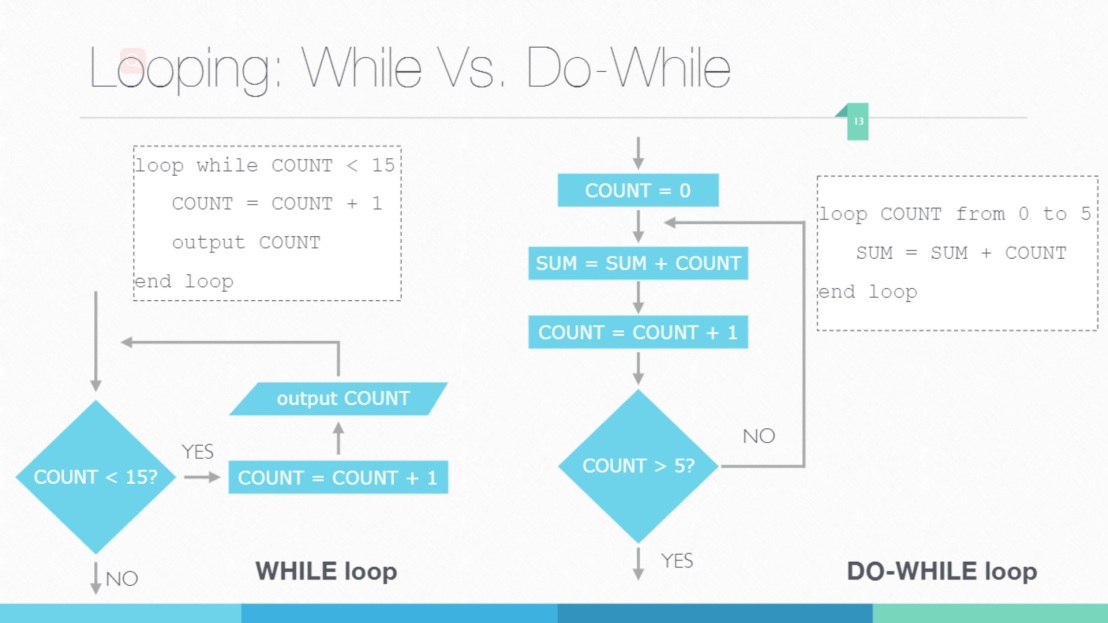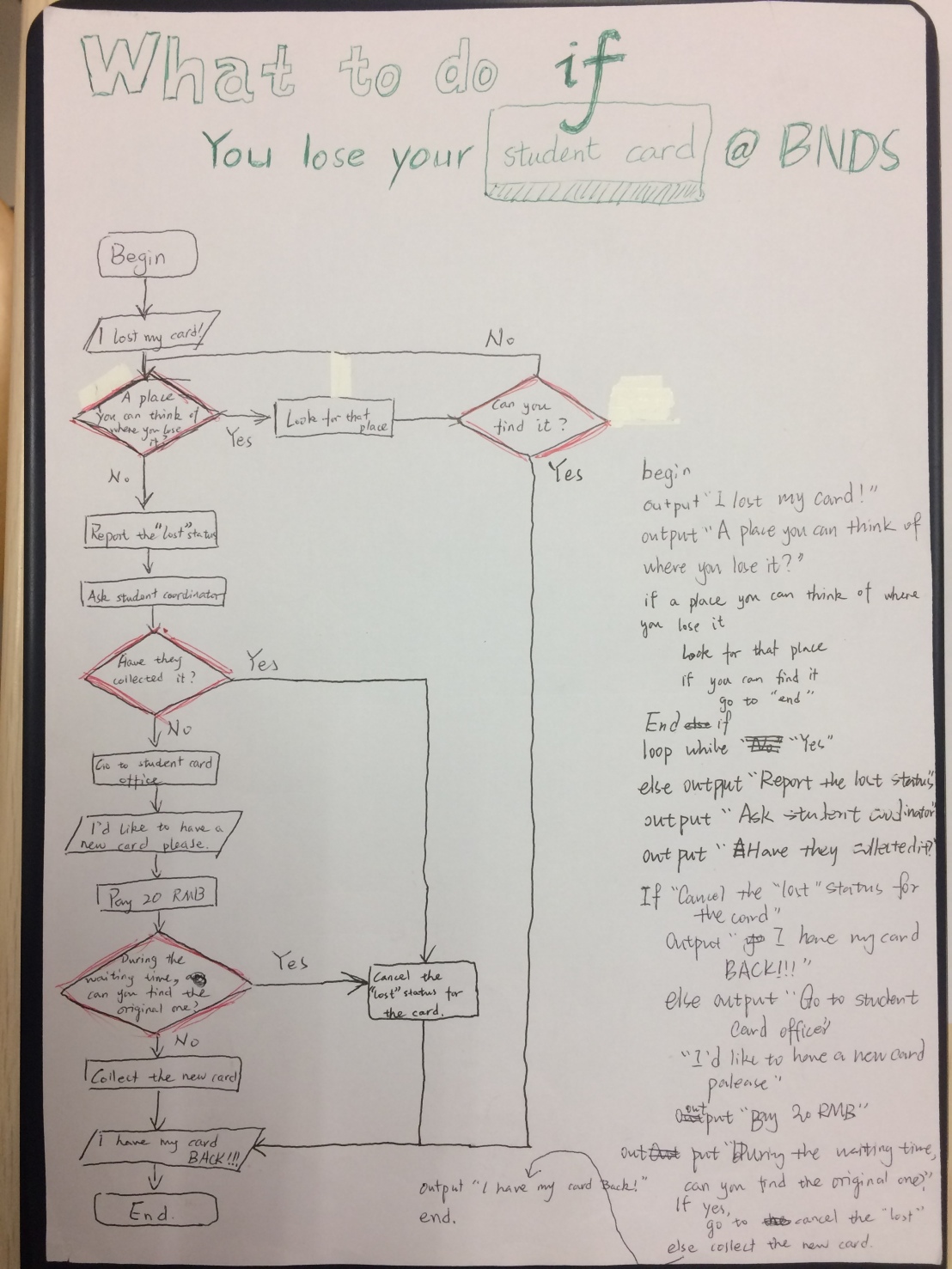As an extension to algorithms and pseudocode, our class came into the field of flowcharts this week. Generally speaking, it is another way to represent a complete set of algorithms. What makes it different than pseudocode is that rather than verbal descriptions in lines, it is literally a “chart” with different geometrical shapes symbolizing different types of instructions (for example, rectangles represent processes). With arrows connecting these shapes, the sequence, as well as the logic of the flowchart is established.
One thing important is that each instruction in a flowchart must be simple to perform and the whole chart must lead to the solution of a problem, which are two of the basic characteristics of an algorithm.

A common flowchart starts with an ellipse with “Start” in it and ends with another ellipse with “End” in it. Rectangles represent processes, parallelograms represent inputs and outputs, and rhombi, where two different routes (“yes” and “no”) originate, represent selections or decisions. These symbols are connected with arrows to follow a certain sequence when the steps in the flowchart are performed.
Notice that a flowchart must lead to an “end” under any conditions that may appear so that it reaches the goal of “solving a problem.”

An “if” sentence in a pseudocode represents a selection, thus can be written in a rhombus where there are two branches providing the two different instructions for “yes” and “no” which corresponds the “if” and “else” cases in a pseudocode. In this picture above, the “yes” and “no” is replaced by “true” and “false”, and the whole flowchart contains a nested if condition (where there is another “if” condition inside an “if” condition).
A loop in a series of pseudocode is represented by a selection with one of the arrows going back to the beginning of the selection after doing a set of processes. This can be illustrated in pictures by the diagrams below:

The looping process will stop when the condition given in the rhombus is satisfied or not satisfied and the program that is processing the instructions continues with the arrow at the bottom of the rhombus.
For this part of the lesson, we had some activities to transform between pseudocodes and a flowchart.
One of the assignments for the week is creating a poster with a problem that appears in a daily scenario at school. We were required to write a detailed pseudocode and a flowchart explaining the process of it. Yvonne and I chose to work on the process of getting your lost student card back.

The last task for the week is a reading material that introduces computational thinking. Generally, there are four techniques in computational thinking.
Decomposition: Breaking down the whole process to solve a problem into minor steps.
Pattern Recognition: Being able to know how to solve problems previously occurred.
Abstraction: Thinking only about the important information, not unnecessary details.
Algorithms: Solving the problem by executing a series of planned instructions.
Such modes are applied when programming a computer. It helps you to work out exactly what to tell the computer to do.